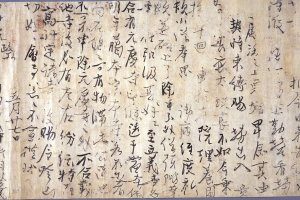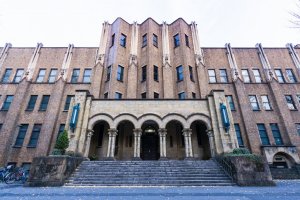Overview
Different to the ancient works of poetry and spirituality that make up Tokyo's literary National Treasures, the ancient documents category of National Treasures is comprised of written works dealing with the nuts and bolts of statehood. Made up of letters, records, catalogues, decrees and inventories, the range of works represent the early Japanese state, its governance and its early relationship with mainland China. Here is a simple guide to where in Tokyo these National Treasures can be found.
Tokyo National Museum
Two 10th-century documents related Enchin, a Buddhist abbot of the Enrayaku-ji Temple, can be found at the Tokyo National Museum. One of the documents details a trip the abbot made to China with information on the relationship between Japan and China. the other document is a letter promoting Enchin to his faith's highest ecclesiastical rank. The museum also holds an 8th-century inventory of items bequeathed to the Horyu-ji Temple by the Empress Koken after the passing of the Emperor Shomu.
Location: 13-9 Ueno Park, Taito-ku, Tokyo, 〒110-8712 (nearest station: Ueno Station, JR Yamanote Line)
Historiographical Institute of the University of Tokyo
The powerful Shimazu clan of Kyushu, whose influence continued from the 13th century until the 20th, left behind over 15,000 documents detailing their approach to rule and governance. The documents are held by the Historiographical Institute of the University of Tokyo.
Location: 7-3-1 Hongo, Bunkyo-ku, Tokyo 〒113-0033 (nearest station: Hongo-sanchome Station, Marunouchi Line)
Tokyo University of the Arts
Once one of the most powerful Buddhist temples in Kyushu, the inventory of Kanzeon-ji Temple dated to October 1 of the year 905 is held by the Tokyo University of the Arts.
Location: 12-8 Ueno-koen, Taito-ku, Tokyo 〒110-8714 (nearest station: Uguisudani Station, JR Yamanote Line)
Mitsui Memorial Museum
A diary written in classical Chinese detailing the visit of Emperor Go-Toba to Kumano in the 13th century is held by the Mitsui Memorial Museum.
Location: 2-1-1 Nihonbashi-muromachi, Chuo-ku, Tokyo 〒103-0022 (nearest station: Mitsukoshimae Station, Ginza Line)
Hatakeyama Memorial Museum of Fine Art
A letter by Fujiwara no Sari written on the occasion of the appointment of one Sasaki to the position of Assistant Secretary in the late 10th century of what is now Kyushu Island and can be seen at the Hatakeyama Memorial Museum of Fine Art.
Location: 2-20-12 Shirokanedai, Minato-ku, Tokyo 〒108-0071 (nearest station: Takanawadai Station, Toei Asakusa Line)
Seikado Bunko Art Museum
The Seikado Bunko Art Museum features a 14th-century series of Chinese letters written in a famous calligraphic style to a priest named Chung Feng Ming Pen expressing deep admiration.
Location: 2-23-1 Okamoto, Setagaya-ku, Tokyo 〒157-0076 (nearest station: Futako-tamagawa Station, Tokyu Den-en-toshi Line)
Maeda Ikutokukai
Though not usually open to the public, the Maeda Ikutokukai features 13th and 14th-century letters by the emperors Hanazono, Go-Daigo and Fushimi. The 11th-century diary of Sadaijin Minamoto no Toshifusa is also held here.
Location: 4-3-55 Komaba, Meguro-ku, Tokyo 〒153-0041 (nearest station: Komaba-todaimae Station, Inokashira Line)


























